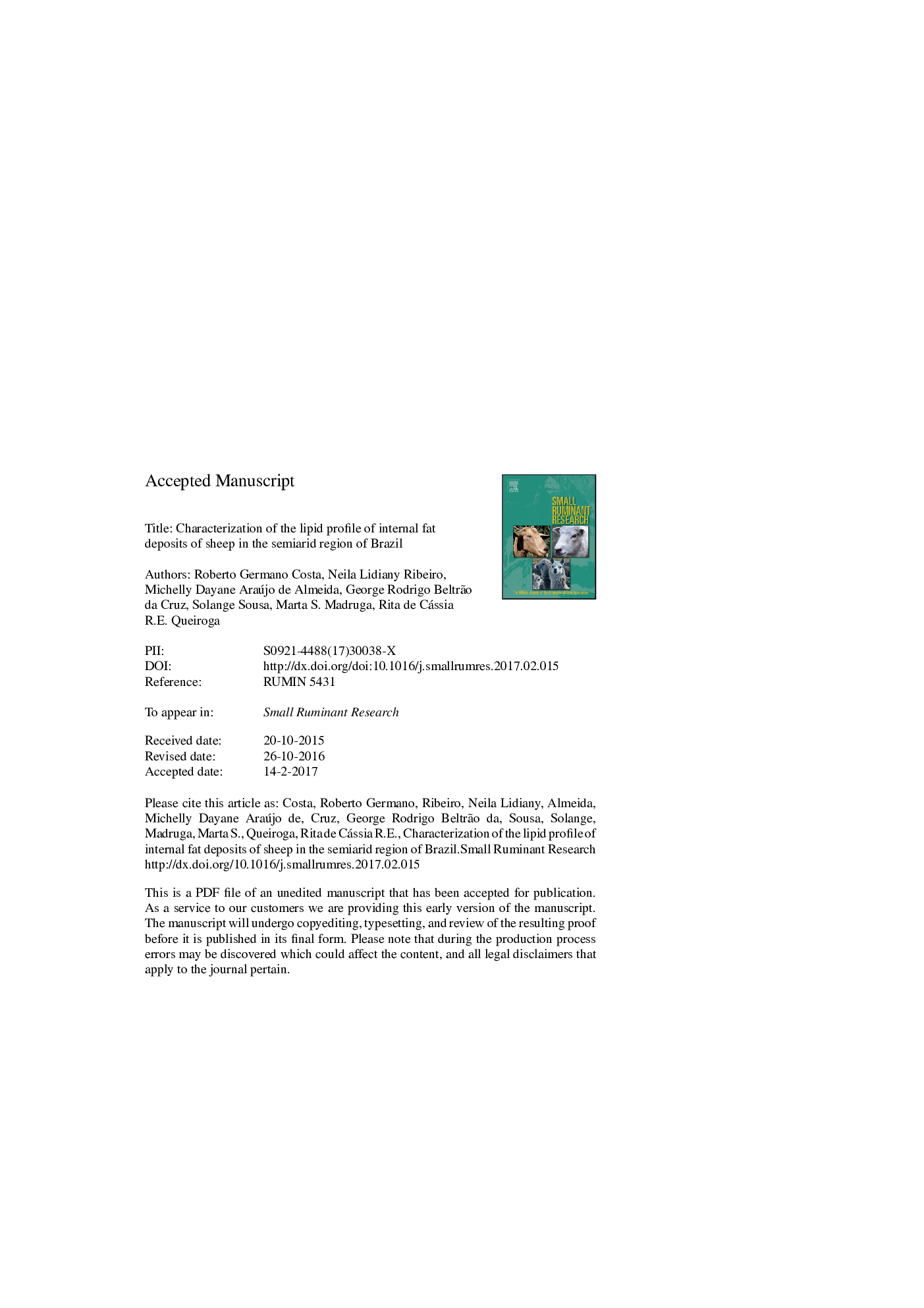| Article ID | Journal | Published Year | Pages | File Type |
|---|---|---|---|---|
| 5544263 | Small Ruminant Research | 2017 | 11 Pages |
Abstract
The objective of this research was to quantify the internal fat deposits in Santa Inês sheep and to characterize the associated lipid profile. Forty-two male lambs, with a slaughter weight of 28.8 ± 2.33 kg and an average age of 7-8 months were used. Samples were collected from omentum, mesenteric, kidney and pelvic fat deposits. The fatty acids were separated by gas chromatography coupled with flame ionization detection. Chromatograms, with data on retention times and the percentages of the areas of fatty acid, were recorded using Peak software (ARI Instruments, USA). We observed that the omentum deposit had greater weight because it is the most active adipose tissue, i.e., the most sensitive to lipolysis because it covers the entire stomach in animals. Fourteen saturated fatty acids, ten monounsaturated fatty acids, and ten polyunsaturated fatty acids were identified. The fatty acids most commonly found in sheep were myristyl (C14:0), palmitic (C16:0), stearic (C18:0) and oleic (C18:1). The fatty acid profile of the fat deposits points to the possibility of using these fats in the formulation of the meat-derived product, an alternative that would add economic and nutritional value to these products.
Keywords
Related Topics
Life Sciences
Agricultural and Biological Sciences
Animal Science and Zoology
Authors
Roberto Germano Costa, Neila Lidiany Ribeiro, Michelly Dayane Araújo de Almeida, George Rodrigo Beltrão da Cruz, Solange Sousa, Marta S. Madruga, Rita de Cássia R.E. Queiroga,
